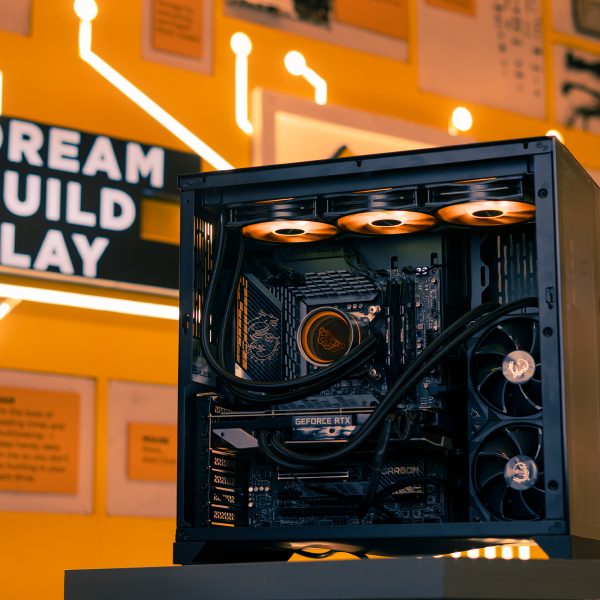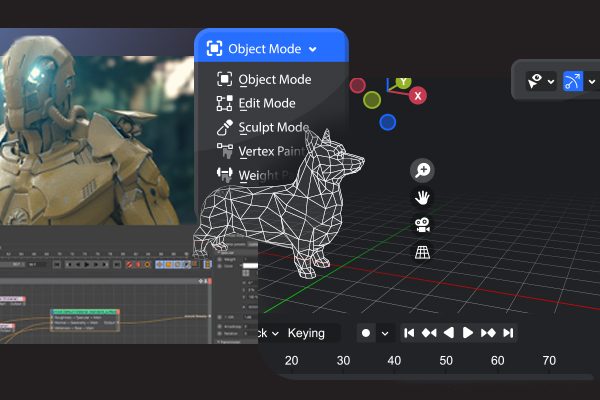Agisoft provides a list of system requirements for Metashape to ensure compatibility with the software. However, it’s important to note that such lists typically only outline the minimum hardware requirements and may not indicate the best hardware for optimal performance. Additionally, these lists can sometimes be outdated, include obsolete hardware versions, or simply not highlight the most efficient hardware.
Although Agisoft’s system requirements list is more comprehensive than most, we have also created our own benchmark for Metashape and conducted tests to determine the best hardware. As a result, we have compiled our own recommended hardware list and even custom configurations based on this information.
CPU Requirement for Agisoft Metashape
How does the CPU affect the performance of Agisoft Metashape?
The utilisation of the CPU in Meta Shape varies with each stage of the workflow. Some stages rely primarily on clock speed, while others prioritise having more cores. However, as of version 1.7.2, it appears that processors with a very high number of cores are not optimal for this application. Mainstream processors from both Intel and AMD perform well.

What is the optimal CPU for Agisoft Metashape?
The fastest CPU for Meta Shape is the latest Core flagship from Intel, the Core i9 13900K with 24 cores along with the Ryzen 9 7950X. You can opt for the latest Flagship i7 & Ryzen 7s too.

It’s worth mentioning that there is a setting in the Meta Shape preferences that can negatively impact performance and cause crashes. You can find more information in a linked article, but in brief, you should visit Tools -> Preferences -> GPU after installing or updating Meta Shape. Make sure that all of your GPUs are selected and that the option to use the CPU during GPU processing is disabled (unchecked). This has been observed to slightly improve performance on average in our tests, but you may want to conduct your own tests to see how your specific hardware performs with this setting enabled or disabled.
How does Agisoft Metashape utilize graphics cards (GPUs)?
Certain parts of the Metashape workflow can benefit from the use of a GPU. These steps include aligning photos, constructing depth maps, and generating the mesh, when depth maps are used as the source material. Utilising multiple graphics cards can also improve performance, especially when working with depth maps extensively.
What are the most suitable graphics cards (GPUs) for Agisoft Metashape?
Most recent GeForce RTX graphics cards are capable of delivering good performance when used with Metashape. There is minimal difference between various models in terms of performance, but adding a second GPU can result in a reduction of 5-10% in total processing time. Whether the performance boost is worth the added cost and complexity will depend on the individual’s budget.

It is suggested to use NVIDIA GeForce video cards over Quadro cards for Metashape. The professional-grade Quadro series cards don’t provide any specific advantage in Metashape and they cost more than GeForce models while offering similar performance. The amount of video memory wasn’t found to have a significant impact in testing, and the higher-end GeForce cards are more cost-effective for optimising GPU performance in a Metashape-oriented system.
On the other hand, the latest AMD Radeon RX 6000 Series cards are not recommended for use with Metashape. They perform better than not having a GPU, but fall behind NVIDIA GeForce models in performance. Additionally, stability issues were encountered while running Metashape on some older AMD graphics cards during testing.
What is the required amount of memory for Agisoft Metashape?
Agisoft has created a comprehensive guide on memory requirements, which is based on three important factors: the number of images, the size of the images, and the quality settings in Metashape. To determine the necessary amount of memory, you need to consider the resolution of the images and the quality settings you plan to use. The guide is based on 12 megapixel (MP) images, but the memory usage is proportional to the resolution of your images. For instance, if you work with 6 MP images, you will need half the amount of memory as recommended in the guide. Conversely, if you use 50 MP images, you will need four times the recommended amount.
It is crucial to consider future needs when deciding on the amount of memory to allocate for Metashape. If you anticipate working with more images or higher resolution images in the future, it’s advisable to allocate more memory to ensure smooth performance. Allocating a little extra memory is better than running low on memory, as this can significantly affect performance.
STORAGE
What kind of drive should be used for Agisoft Metashape?
For the best performance, it is recommended to use a solid-state drive (SSD) as the primary drive for hosting the operating system and installing Metashape. The high speed of SSDs allows for faster booting and application launching compared to traditional hard drives, and the newer NVMe SSDs with M.2 connections offer the fastest transfer rates. If budget permits, a second drive can be used to store active projects, and it is advisable to have an OS drive with a capacity of at least 500GB to avoid the need for an upgrade in the near future. The size of the project drive should be at least 1TB or larger, depending on the size of the image sets.
For long-term storage and backup, traditional hard drives or external drive arrays are more cost-effective options compared to SSDs. Network attached storage systems are also a good option, as they can be shared between multiple workstations and often offer data redundancy features.
Check out our catalogue of optimised Agisoft Metashape builds here.
We build and ship Custom PCs across India with upto 3 years of Doorstep Warranty & Lifetime Technical Support. We have 3 stores in Hyderabad, Gurgaon & Bangalore. Feel free to visit them or get in touch with us through a call for Consultation.







Great post however , I was wondering if you could write a litte more on this topic? I’d be very thankful if you could elaborate a little bit further. Cheers!